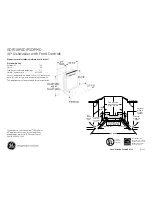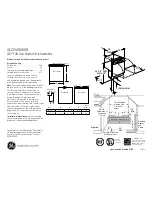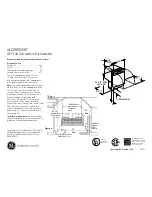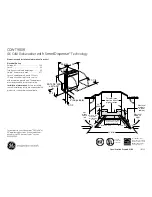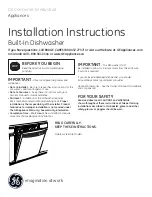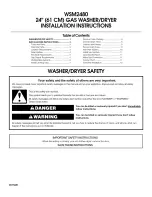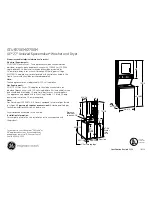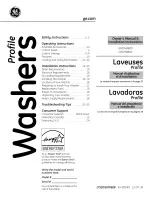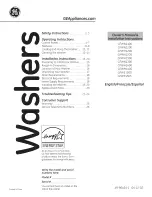
PCL13GB
26
For Best Washing Results:
Before loading, remove all scraps of food and soak
very heavily soiled pots and pans.
Always arrange saucepans, cups and glasses etc. up
side-down.
Tilt items with convex or concave surfaces so that the
water drains off easily.
Long items of cutlery such as ladles, carving knives
etc. should be positioned horizontally in the upper
basket.
Avoid contact between the dishes as far as possible;
correct arrangement of the items will give better
washing results.
Light items (plastic bowls etc.) should be loaded in
the upper basket and arranged so that they do not
move during washing.
To Save Energy
Do not prewash dishes under running water.
Place dishes in the machine immediately after every
meal and wait until the dishwasher is full before washing.
If necessary run the Rinse and Hold programme (see
Programme Chart on the following pages), so that
any food scraps do not become caked on the dishes
while you are waiting to run the complete wash
programme. Select an ECONOMIC programme when
the baskets are not very full and/or when the dishes
are not very soiled, following the instructions given in
the Programme Chart (ECONOMY programme,
QUICK WASH programme).
Select the NO DRYING option, in this case no drying
phase will be done.
You will improve drying results by leaving the dish-
washer door ajar for at least 15-30 minutes as soon
as the programme finishes.
Items not Suitable for Dishwashers
The following should not be washed in the
dishwasher:
Cutlery or dishes with wooden or horn handles or
glued parts.
Handmade items, wooden objects, antiques or hand
painted china.
Certain types of decoration can discolour when
washed in a dishwasher.
Crystal-ware and plastic objects, if not guaranteed
dishwasher-proof, should be washed by hand. You
are advised to place them in the upper basket and to
select a delicate programme.
Certain types of glass can also become opaque after
being washed several times in a dishwasher.
Silver cutlery tends to go black if mixed with steel
cutlery. Place it in the cutlery basket separate from
the others.
Iron and cast iron objects can rust and stain other
items.
Aluminium tends to go black; copper, pewter and
brass tend to stain.
Caution: You are advised not to load very small or
plastic items which can fall through the baskets.
Note: When buying new dishes, ensure that they are
dishwasher-proof .
Caution
When loading the dishes,
ensure that you do not
cover the water inlet
funnel in the middle of the
upper basket.
Adjusting the Height of the Upper Basket
If washing very large plates (over 27 cm and up to 31
cm in diameter) you can load them in the lower
basket after moving the upper basket to the higher
position as follows:
- pull out the basket;
- grasp it on the two sides
and pull it upwards until
the mechanism is en-
gaged and the basket is
stable.
When the top basket is in
the higher position it will
only take plates up to 20
cm in diameter and you will not be able to use the
raised cup-racks.
To put the basket back in the lower position, grasp the
two sides, pull upwards again, then allow the basket
to drop back down slowly, keeping hold of it.
Warning: never lift or lower the basket on one side only.
US04
RC04
HELPFUL HINTS
Before closing the door, ensure that the spray
arms can rotate freely.


















